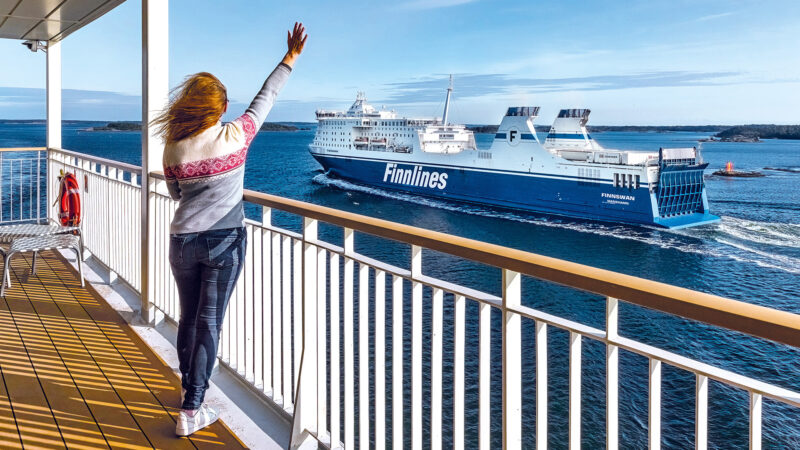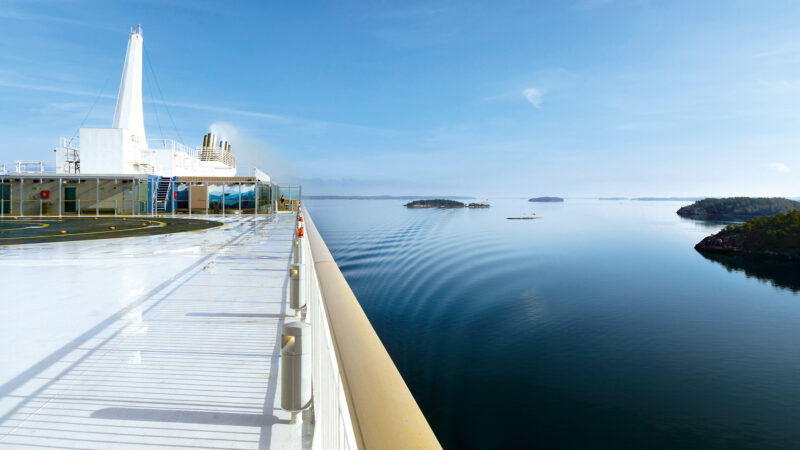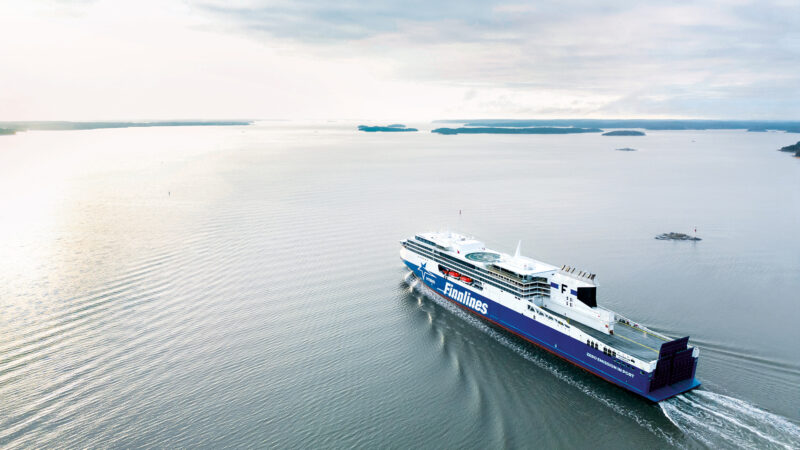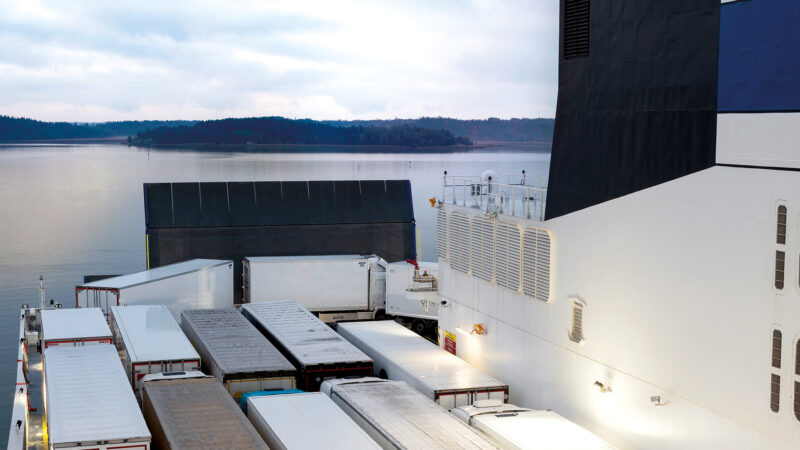Business environment
Finnlines’ business areas include the Baltic Sea, the North Sea and the Bay of Biscay. Finnlines’ customer-oriented liner services and access to the Grimaldi Group’s extensive network offer a reliable maritime connection to Europe. In 2023, the operating environment was overshadowed by the geopolitical situation and weak global and euro area demand.

International shipping is subject to intense competition on a global scale. Geopolitics, capacity on the market, international environmental regulations and increasing digitalisation impact shipping. During the year under review, the ongoing war in Ukraine and the conflict in the Middle East have reflected in global freight volumes. Unfavourable market conditions have also increased the overall uncertainty.
Sea transport is vital to Finland’s foreign trade as around 95 per cent of exports and imports are carried seaways. The Finnish export industry consists of some few special categories, like forest and technology industries and engine manufacturing. This makes Finland sensitive to market fluctuations and a slowdown in the economic growth affects cargo volumes fast.
Sustainable shipping has been a key issue in the industry for several years. Digitalisation has moved ahead fast even in the most conventional shipping business. Digital services and systems improve efficiency and customer experience.
In Finland, Finnlines is a significant operator, being responsible for the two most important maritime bridges (Finland–Germany and Finland–Sweden), and providing important connections for the export industry. Finnlines has sought out new business areas and opened new routes and connections to its customers. In the past few years, Finnlines has invested as much as EUR 0.5 billion in new vessels and clean technology.
Finnlines demonstrates a high degree of flexibility and the large fleet makes it possible to transfer tonnage where there is demand. The affiliation with the Grimaldi Group’s global network ensures that Finnlines can deliver customers’ freight to any destination in the world.
Market development
Continental European countries and especially Germany, Finland’s largest export country, are important for Finnlines operations. During the year under review, Germany continued to suffer from the global downturn, but its economy is projected to start growing in 2024. Finland’s other major trading partner, Sweden, has also suffered from recession.
The geopolitical situation remained unstable and demand was weak both globally and in the euro area. Negative development in Finnish exports and imports reduced Finnlines’ cargo volumes, but the passenger volumes developed very well. Despite the decline in cargo volumes, Finnlines was able to maintain its market share in the German lorries and trailers market. In Sweden, the market share even increased despite the challenging market conditions.
According to the International Monetary Fund (IMF), the global GDP growth is forecasted to 3.1 per cent in 2024 and 3.2 in 2025. Compared to 2023, the forecast for 2024 is slightly more positive. Meanwhile, the euro area’s GDP growth is expected to increase from 0.5 per cent in 2023 to 0.9 per cent in 2024 and 1.7 per cent in 2025. Finland’s GDP growth is also projected to rise from -0.1 per cent in 2023 to 1.0 per cent 2024.
Global inflation, which peaked at 11.6 per cent in the second quarter of 2022, had halved to 5.3 per cent by the second quarter of 2023. The IMF anticipates a steady decline, with global inflation expected to reach 6.8 per cent in 2023 (annual average), followed by a further reduction to 5.8 per cent in 2024 and 4.4 per cent in 2025. However, core inflation is projected to decrease slowly, and most economies are expected to reach their targets by 2025. In the euro area, annual average inflation is predicted to fall from 5.6 per cent in 2023 to 2.8 per cent in 2024 and 2.1 per cent in 2025. Meanwhile, inflation in Finland is forecasted to decline from 4.5 per cent in 2023 to 1.9 per cent in 2024.
Based on the statistics by Traficom, the Finnish seaborne imports carried in containers, lorries and trailer units decreased by 14 per cent to 10.0 million tonnes in 2023, and exports decreased by 5 per cent to 15.4 million tonnes. According to Statistics Finland, commercial passenger traffic between Finland and Sweden decreased by 2 per cent, and between Finland and Germany the traffic increased by 8 per cent in 2023.




